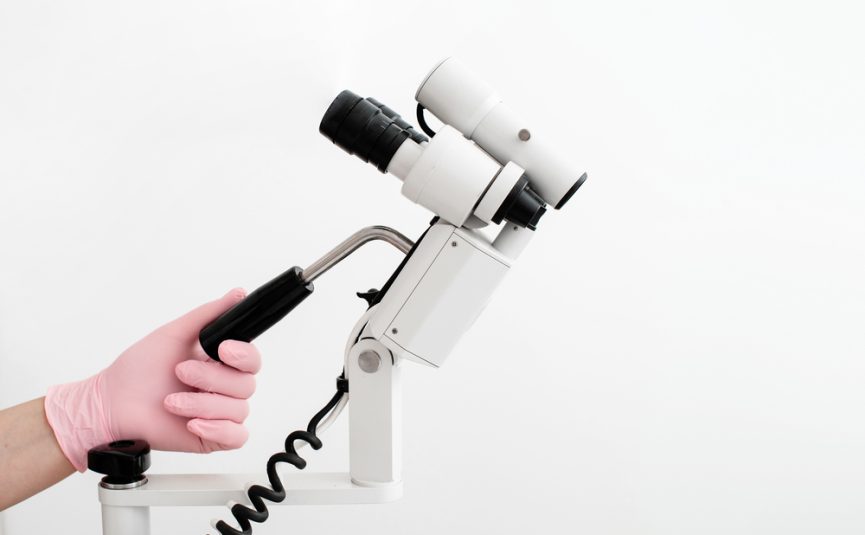East Melbourne VIC 3002
Understanding Abnormal Cervical Screening Test Results

Prior to 2018, it was recommended that cervical screening tests or Pap smears should be performed every two years after a woman became sexually active. The guidelines now state that unless you have symptoms such as abnormal bleeding, your first cervical screening test (CST) doesn’t need to occur until you are 25 years of age.
Once you have reached 74 years of age pap smears are no longer necessary – unless you have symptoms such as abnormal bleeding.
What is a Cervical Screening Test?
A cervical screening test is a painless routine health check, performed to look for signs of human papillomavirus (HPV) – an infection commonly associated with cervical cancer.
Despite government guidelines, Associate Professor Len Kliman performs cervical screening tests every 2 years. This is for two reasons.
Firstly the procedure is performed as part of a woman’s check-up which means there will be a breast check, a check for lumps on the ovaries, a check on your pelvic floor and any symptoms or signs will be fully investigated.
Secondly, cervical tests can often return a false negative meaning the results mightn’t be correct making it safer, and more sensible to book a CSTs appointment every two years.
How are Cervical Screening Tests Performed?
To perform a cervical screening test a metal instrument called a speculum is inserted gently into the vagina and using a plastic spatula device, a sample is taken from the cervix which is the lower part of the uterus.
As mentioned, cervical screening tests are a simple process and involve a simple painless examination. Women can perform CSTs themselves which means they are obtaining a sample in the vagina not necessarily of the cervix itself. It is however more accurate to obtain cells from the cervix, especially if you have symptoms such as abnormal bleeding and by taking the CST yourself, you do not have the advantage of having a breast check and full gynaecological examination.
Why are Cervical Screening Tests Performed?
These tests are performed primarily to exclude precancerous changes on your cervix. Treating precancerous changes if they become significant avoids the development of cervical cancer. The accuracy of routine screening has improved greatly since 2018 making the actual incidence of cervical cancer forming significantly lower in Australia.
How To Prepare for a Cervical Screening Test (Pap Smear)
Cervical screening tests are part of a routine examination and there is nothing special that you need to do. If you are having your period, it is best to delay your cervical screening test until you have ceased bleeding altogether. Cervical screening tests taken at the time of a period have an increased false-negative rate and are therefore deemed to be less accurate.
What do Abnormal Cervical Screening Test Results Mean?
Since 2018, cervical screening tests have largely been designed to detect the HPV (human papillomavirus) which is the virus responsible for cervical cancer. Not only is the virus detected but the particular subtype of the virus can be determined. We know that certain subtypes, especially subtype 16 and subtype 18 are associated with the majority of cervical cancers. It is important to realise that the timeframe for the development of cervical cancer if you have the HPV virus, is extensive – often over a 10-20 year period.
If you have one of the high-risk subtypes HPV 16 or HPV 18, then you will need to be followed up immediately. If you have one of the lesser subtypes the CST may only need to be repeated in 12 months’ time. It is important to realise that having the HPV virus means you have the possibility of precancerous cells of the cervix – you do not have cervical cancer. If your cervical screening test shows the HPV virus, the Victorian Cytology Service which looks at cervical screening tests will then proceed to look at the cells of the cervix. These cells are then graded as normal, low grade (minor changes) or high grade (more significant changes which usually require treatment).
Common Causes of Abnormal Pap Smear Results
Common causes for abnormal cervical screening tests are usually due to the HPV virus.
Other common causes of abnormal results include:
- HPV virus
- Presence of vaginal infections including common infections such as candida(thrush)
- Inflammation where the cause is not certain as no infection is possible
- The presence of other vaginal skin disorders
- Cervical cancer – the least likely cause
Symptoms Associated with Abnormal Cervical Screening Tests
It is important to realise that the majority of women who have abnormal cervical screening tests usually due to the HPV virus have no symptoms whatsoever. This has been detected as part of a routine check.
However, women who have abnormal cervical screening tests may notice abnormal uterine bleeding, especially bleeding between their periods or more significant bleeding after intercourse. Women with abnormal cervical screening tests may also notice an excess or abnormal vaginal discharge which may be blood-stained making the discharge either red or brown.
What Do I Do If My Cervical Screening Test is Abnormal?
As mentioned previously, abnormalities on cervical screening tests are usually due to the HPV virus. If you have HPV 16 or 18 – one of the high-risk subtypes, a procedure called a colposcopy should be performed. This is where we need to look at your cervix with a microscope. This procedure is performed in the office. In some cases, a painless biopsy will need to be taken. This is to determine whether or not treatment is required or observation itself is sufficient. If the cells look abnormal on the colposcopy usually a biopsy will be necessary.
If you have one of the lesser subtypes of the virus called non-16/18 HPV virus, and if this is your first abnormal cervical screening test it often only needs to be repeated in 12 months’ time particularly if the cells look totally normal. Associate Professor Len Kliman’s practice will always notify you when follow-up is required and discusses the results of all cervical screening tests, colposcopy examinations and biopsies. What treatment may then be necessary is also discussed and also you and your referring GP will have all this information in writing.
Treatment for Abnormal Cervical Screening Tests
If your colposcopy examination confirms that you have HPV, and what is called high-grade changes, then the abnormal cells need to be removed.
A procedure called an LLETZ (large loop excision of the transformation zone) is a surgical procedure where the abnormal cells present are looped off with an electric loop. This is done as a day procedure and is performed under general anaesthetic. The vast majority of patients will never have an abnormal cervical screening test again after this procedure. To ensure a cure, you may need yearly colposcopy tests performed in the office until you have two negatives (that is normal) tests in a row.
Who Should Get a Cervical Screening?
The following women do not need to have cervical screening tests:
- Women under the age of 25 have no symptoms such as abnormal bleeding
- Women who have never been sexually active
- Women who have had their cervix removed surgically such as a hysterectomy where the hysterectomy was not performed because of abnormal cells or cancer and who remain asymptomatic
- Women over the age of 74 who do have any abnormal symptoms, especially no abnormal bleeding
Associate Professor Len Kliman has been treating women with abnormal cervical screening tests for over 35 years. He has been trained in the appropriate management and follow-up of disorders relating to abnormal cervical screening tests in both Melbourne and overseas. Call us on (03) 9419 2372 to discuss your cervical screening results or book a checkup appointment with us through our appointment request form.










